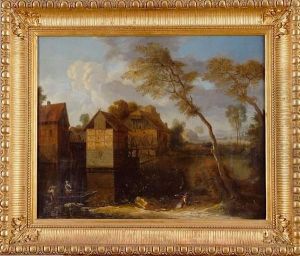Jacques Rysbrack Paintings
Johannes Michel or John Michael Rysbrack, better known as Michael Rysbrack, was a Flemish sculptor who is considered one of the leading sculptors in England in the 18th century. Born on 24 June 1694 in Antwerp, Belgium, Rysbrack was part of a family with a strong artistic tradition; his father was a painter and his brothers were also involved in the arts.
Rysbrack moved to London around 1720, at a time when the demand for monumental sculpture was increasing, particularly for the decoration of private residences and public buildings. His arrival in England coincided with the beginning of the Palladian style's influence on British architecture, which favored classical forms and often included sculptural embellishments.
During his time in England, Rysbrack quickly established himself as a prominent sculptor, earning commissions from some of the most important figures of his day, including members of the aristocracy and the royal family. He was highly skilled in carving marble and his works included portrait busts, funerary monuments, and garden statuary. Among his notable works are the statues of kings and queens in Westminster Abbey, the monument to Sir Isaac Newton in the same venue, and the bust of Hans Sloane, which is now in the British Museum.
Rysbrack's style was characterized by a vigorous naturalism combined with a mastery of drapery and a sense of grandeur, which reflected the influences of both the Baroque and the emerging Neoclassical styles. His work was instrumental in the development of British sculpture and exerted a significant influence on later artists.
Michael Rysbrack continued to work and live in England until his death on January 8, 1770, in London. His legacy includes a body of work that is still admired for its craftsmanship and elegance, and he remains a respected figure in the history of British art.
